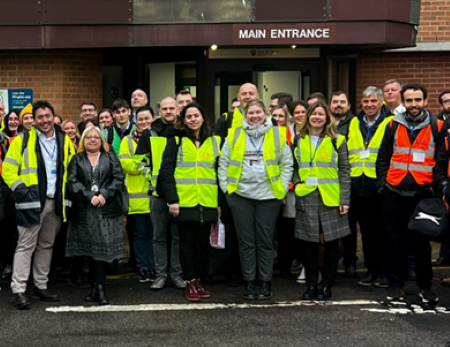Manufacturers in the pharma sector require efficient systems support for planning the effective provision of capacity and scheduling efficient operations. Smart systems offering an affordable, viable and functional alternative to spreadsheets and manual processes will contribute to efficiency and profitability.
The pharmaceutical industry is going through a period of almost unprecedented transformation, as what have traditionally been seen as predictably stable and profitable lines of business become anything but.
Few new ‘blockbuster’ drugs are coming through the research pipeline – instead the industry is having to develop more ‘personalised’ treatments for smaller groups of patients with more tightly defined conditions. Research and development costs however remain high, or are increasing, while patent life remains limited. Healthcare providers, often monopoly buyers, are attempting aggressively to drive drug prices down, at the same time increasing the regulatory burden.
There is thus a premium on introducing new products and addressing new markets as quickly as possible, whilst the industry is also, and for perhaps the first time, having to focus on manufacturing, supply chain and distribution costs and efficiencies in the way that has long been familiar in other sectors such as automotive or aerospace. This in turn requires that all players deploy advanced software and systems that ensure total visibility and accurate control across supply and manufacturing.
In particular, the industry needs both advanced capacity planning capabilities as well as control of day-to-day production planning.
Capacity planning is not only the initial design of drug production routes and facilities, but also the capability to analyse and alter the ‘facility fit’ as new drugs and markets appear – a task complicated by the high level of product variant (in terms of formulation, source of ingredients, or manufacturing process) and the attendant regulatory complication. The need is for systems that can readily determine optimum product mixes and manufacturing locations, and also reveal what is needed to introduce production of a particular drug to a particular facility and make it work efficiently and profitably.
It takes so long to gain approval for changes and introductions that it is worth investing in time and method to get the right answers. At the same time, systems must not lose sight of the need for tight and accurate control of day-to-day production scheduling. Systems that can use the same tools and databases, both for the high level design of capacity and its daily operation, offer obvious efficiencies. Nonetheless many firms, even some of the biggest, still struggle to plan and schedule using elements of ERP and even simple spreadsheets.
ERP-based systems, with their assumption of infinite capacity, and inability to readily model and critique alternative plans, are inadequate on their own, often leading to dependence on a variety of more or less isolated spreadsheets, or even manual, planning board approaches.
It is generally recognised that spreadsheet approaches are complex, slow and time-consuming, even though they tend to require expert users, and they fail to offer much in the way of visibility. But there is a general impression that specialised planning and scheduling modules are over-priced, or at least offer insufficient cost benefit, and are too complicated to integrate and apply, while the more general planning systems are not up to the job. An Advanced Planning and Scheduling (APS) system is essential, as we have seen, and there are now available systems such as Access Orchestrate (developed by Production Modelling and acquired by Access in January 2014) that can off er an affordable, viable and functional alternative. This has been successfully implemented in a number of pharmaceutical manufacturers, suppliers and sub-contractors large and small as well as in other process industries that face similar, albeit less acute, challenges.
Combining long-term capacity planning and ‘what if’ analysis with day-to-day scheduling in a single graphically visible system is an important virtue. As is seamless integration with other solutions such as financials and MRP, thus helping companies manage issues such as: Traceability, batch control, cool chain monitoring, sales order processing, delivery management, management of stocks kept on-hand for customers, and stock expiration – in fact the gamut of activities from sales order to purchase order, with production management in the middle, all of which are needed to keep the customer happy.
Importantly for the pharmaceutical industry, a system such as Access Orchestrate is also adept at managing complex non-productive activities. For example, production equipment requires a rigorous clean down in the changeover between products or batches. Obviously, this requires down-time to be scheduled, but the activity also needs to be scheduled against, for example, the availability of the personnel with the necessary skills or certification to do the cleaning. Scheduling the restart also may affect when ingredients for the next batch are removed from refrigeration (which may require another worker with different authorisation), bearing in mind that they can’t be re-cooled if there is a delay. Having a clean-down wait on the availability of the right people with the right skills may be costly; but so too may be overtime payments to effect a clean-down out of hours – hence the importance of integration with financial systems.
Ready visibility of processes in real-time is also vital. For example, vessels often have limited hold times – exceeding this may imply lost batches and additional cleaning. A real-time visual system can alert operators to the impending possibility, allowing cost-effective resolution – not something readily obtained from coloured squares on a planning board.
Day-to-day scheduling constitutes a myriad of decisions all of which potentially impact both on customer service and manufacturing profitability. On a broader scale so does capacity planning, and it is important to be able to perform this, and to model alternatives, without disrupting the day-to-day plan.
Capacity planning and analysis is not, in the pharmaceutical sector,a simple matter of matching forecasts and sales orders to machine availability. As previously noted, skills availability is of equal importance. Many firms will have multiple facilities, perhaps in more than one country – decisions on where to manufacture a new drug or a new variant most effectively may not be obvious. Also, timing is often an issue. Both input ingredients and finished product may have short shelf lives, as well as being vulnerable in extended logistics chains. Not infrequently, pharmaceutical companies are required to respond to quite unforeseeable and urgent requirements – in the event, for example, of epidemic disease – but cannot simply postpone the manufacture of other, also vitally needed, drugs to create capacity. Such challenges confront not only the drug manufacturer itself, but also the many supplier companies involved in preparing ingredients and precursors (processes which may in practice be lengthier and more complex than that of putting the finished formulation together).
Capacity analysis is of course a key element in designing new plant or lines, but in practice existing facilities are continually redesigned and reconfigured to meet changing requirements. It is important for a production scheduling and planning system to use the same datasets generated in plant design and, where appropriate, pilot stages for the day-to-day running and scheduling of the plant. By creating product and process templates, a company’s hard-won manufacturing expertise can be re-used for new plant design, modification and operation. This saves design cost, accelerates time to market, and helps ensure that daily operational practice adheres to the plan.
This ‘recipe’ based approach is exactly what process engineers use to map out the steps of manufacturing processes. Engineers can thus use a system such as Orchestrate operationally with a minimum of training. Gantt charts are clear and uncluttered and many other graphical outputs can be easily configured – examples of those in common use include labour and equipment utilisation, utility requirements, on-time delivery performance, material expiration, work in progress, and cost analyses. The system readily links to and can be populated from existing systems such as SAP and more specialised routines such as weigh and dispense.
Advanced Planning and Scheduling doesn’t replace ERP and other systems, of course, but it fills the gaping void labelled, ‘finite capacity’. There are industries where capacity comfortably exceeds requirements, or where pinch points can confidently be monitored and addressed using eyesight and experience, but pharmaceutical is not one of these. Planning the effective provision of capacity, and scheduling its efficient operation, requires highly competent systems support: Failure to provide this risks incurring both manufacturing and potentially human costs.
www.theaccessgroup.com







